LOST: November 2013 Snapshots
In November 2013 a total of 23 demolition permits were applied for in Arlington County. Twenty-one of them were for single family homes, and one was for a commercial building. Five of the houses and the commercial building are part of a major site redevelopment. We show all of these doomed properties below.
The demolition of these houses and buildings represents an incredible loss of history, architecture, time, energy, and materials. Some of these houses are in National Register neighborhoods; other buildings are increasingly rare examples of low-rise commercial architecture. All had the potential for renovation and additions. Preservation Arlington urges citizens to adopt Local Historic District designations for their communities, with standards for design, height, and placement that could be customized to reflect community needs while still allowing reinvestment to occur.
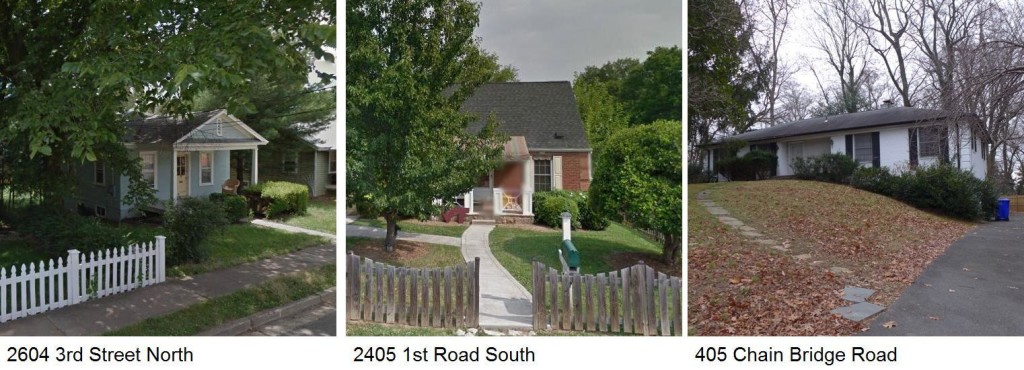
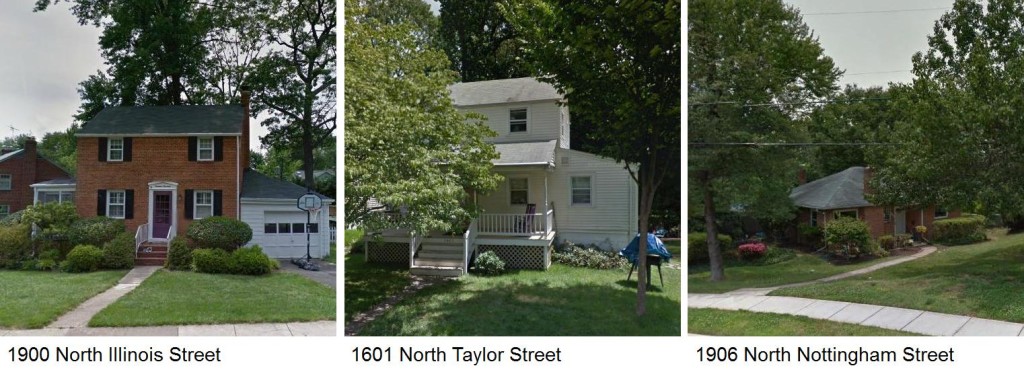
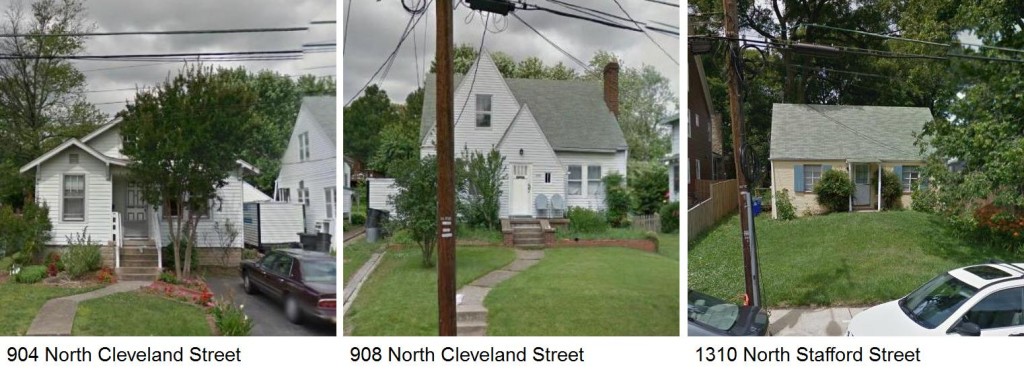
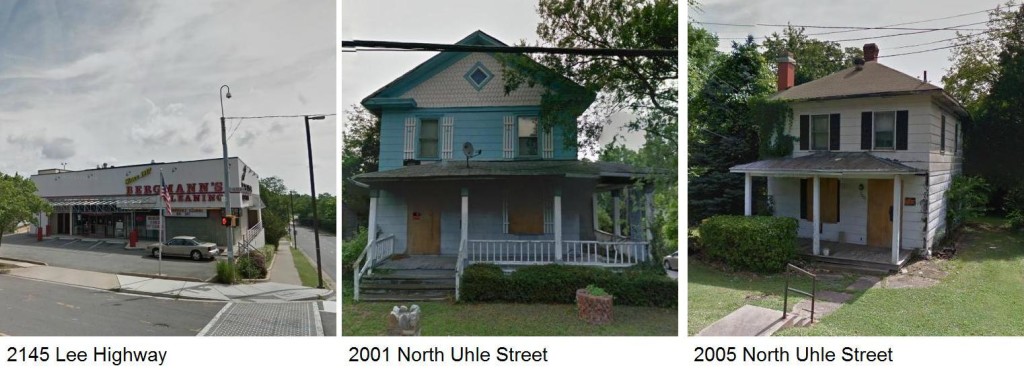
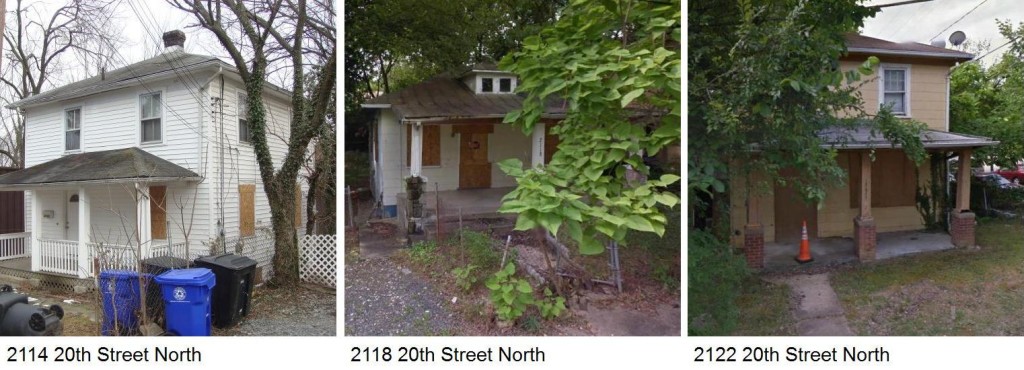
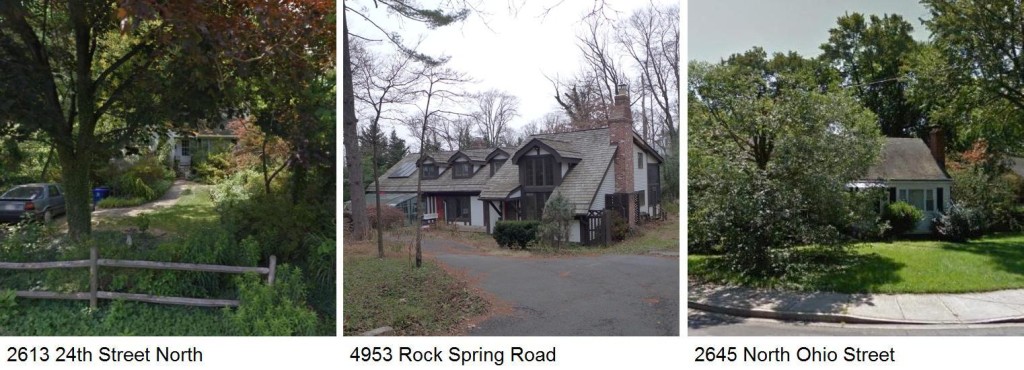
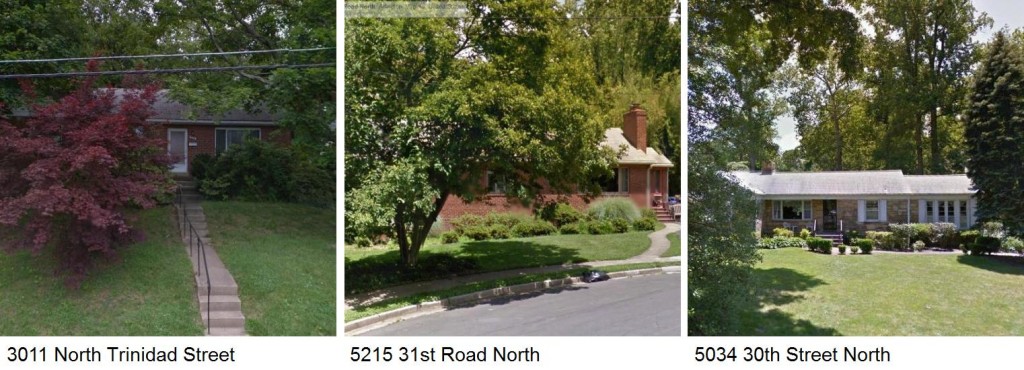
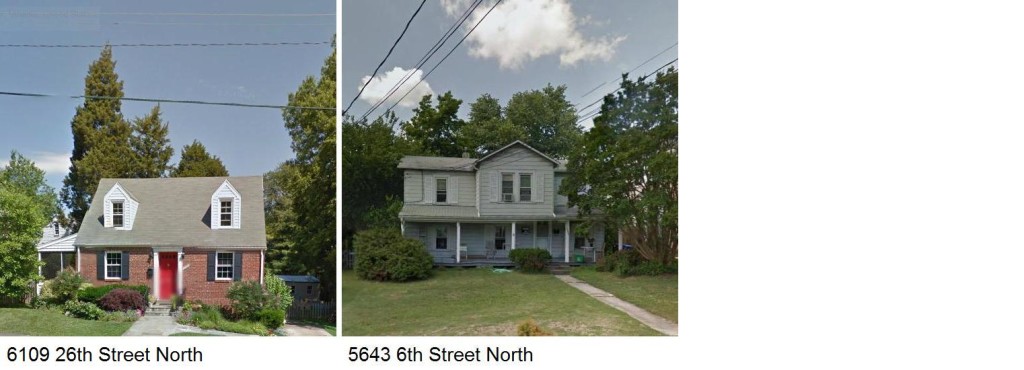
7 thoughts on “LOST: November 2013 Snapshots”
It is sad to see these. I’m glad you got a picture of them before they went down. I passed an old house today that is not in your lineup. On Lexington across from where the Westover library used to be. It is being torn down as I write this. I don’t have the address but it is on a big corner lot.
I see that you posted a photo of the 1827 Lexington house in October. It is sad to see these go.
Of this months’ lost buildings, ten look like shacks. Dumps. BuhBye. As an architect, I support historic preservation, but the idea that EVERY old building is better than ANYTHING anyone alive today might build in its place? That’s offensive and ridiculous. Sarah Palin-like in its lack of rational thought and extremist point of view, Preservation Arlington doesn’t do well at garnering my support. These “represent and incredible loss of history”? Why? Just because you say so? (cricket noise) There seem to be “facts” spewed with no evidence to support them. Which are in National Register neighborhoods? Low-rise commercial . . . “rare”? I think Preservation Arlington would do better to take a reasoned approach to what buildings might be and ought to be saved. And then educate people as to why, instead of just whining and rabble rousing.
Speaking of a reasoned approach, I think that, if you read over the whole entirety of the blog, it offers many educational and informative articles that discuss Arlington’s architectural history and how and why it has been and must be saved (and how thoughtful redevelopment has taken existing and historic buildings into account). The LOST series serves to highlight the sheer volume of structures that are demolished in a single month in Arlington. Nobody here is advocating that every building be saved and nothing ever changed. But all this demolition results in the loss of a critical mass of historic fabric that defines the character of Arlington neighborhoods. It’s not that every house is “historic” or National Register-eligible on its own, but they contribute to neighborhood context and character. Also, with outright demolition, most of the building materials are not reused and go straight to the landfill, resulting in the loss of the embodied energy in those structures. Anyway, it would be great to hear more about your work and your support of historic preservation in Arlington.
Thanks Kim
I’ve thought a lot about my strong negative reaction to these monthly “Lost” posts. The extreme language – “doomed”, “incredible loss of history”, “ALL had the potential for renovation . . .” These absolutes simply aren’t true. Garnering support by upsetting people, not educating them is Fox Newish.
Personally, I believe every human who dies is a loss – lost memories, lost history. But buildings aren’t people. They are commodities in the physical world. It’s awesome to have some old ones. Restoring and stewarding is a labor of love, car or building. But we don’t mourn every Chevy Vega junked, for the loss of history and materials. And sad but true, many of the houses shown (2405 1st Rd S and 6109 26th St N) (or the 3 farmhouses which are almost exactly alike) are interchangeable, and not rare. Like Chevy Vegas, there were a lot of these houses made, they’re small, and were built sort of cheaply. Mass produced housing makes up, alas, the bulk of Arlington. Nostalgia for the recent past doesn’t beget historical importance. The fabric and character of Arlington is an evolving thing, as it was when these were built.
The Fox News style response might be – if every doomed building is like losing and old friend, then every new building is like a new one born with new ideas and new opportunities to love it. So why do you hate babies?
Outrageous statement, I know. So is the idea that vintage houses/cars are so wonderful/historic, that people should be forced to fix them instead of buying new. And if they do buy new, it should match the old ones to keep the parking lot looking pretty?
When I moved to the North Highlands neigborhood (location of the Bergman’s property to be redeveloped) 15 years ago, most of the houses in that parcel (like others in my neighborhood that are gone now) were not shacks or dumps, but were allowed to deteriorate as they sat vacant for years. As a group, the houses on North Uhle and North 20th Streets were a surviving, intact cluster that could have become very desirable (like the house next door to me that is currently being renovated and doubled in size), while replacing Bergman’s with a more neighborhood-friendly use (small grocery, etc.) If the developer had placed a higher value on integrating the new with the historic, the result could have been something unique rather than another all-new mixed-use development like so many others in Arlington. I believe this is the kind of balanced development for which Preservation Arlington is advocating, rather than saving everything that is old, .
Comments from Mr. Batson show a very myopic and narrow point of view on what historic preservation in total includes. It’s not just preserving representative examples that show the historical development of residential and commercial dwellings in Arlington. An equally important factor is the environmental and economic costs of constant, repetitive demolition and development, resulting in cookie cutter mega-mansions in most cases, replacing perfectly liveable, structurally sound more modest buildings.
The comparison to Chevy Vega’s is spurious. Millions of Vegas were built, and they were pretty junky to begin with. I’ve been inside hundreds of now demolished homes in Arlington, and 90% were very well built, structurally sound, would last for decades longer if only minor maintenance had been accomplished. I have often been appalled at the quality of many homes that have been demolished in the last 35 years in Arlington.
Loss of quality of life is another concern. Does Mr. Batson recall when the Birchmere was located on the corner of Arlington Mill Drive and Walter Reed Drive? There was a nice, compact community shopping center there with an A&P grocery store, a Chinese restaurant, a Laundromat, a pool hall, etc. Then the Anden Corp came in from California and built the Windgate II development and then a couple years later, Heatherlea, another separate condo development. This, in total, was a severe blow to the history and the quality of life in this neighborhood. And this has been repeated dozens of times all over Arlington.
When a Vega is junked, it is compressed to an 18 inch cube of steel and re-cycled. Almost all glass and plastics in the car are removed before compaction and are also recycled.
When a home or commercial building is demolished, in most cases, almost nothing is recycled. A typical 3 BR bungalow will fill five or six large dumpsters, and everything -wood, brick, concrete, wiring, metal, etc. – goes to a landfill somewhere, and it all has to be trucked, hauled, down roads and highways, consuming fuel, oil, tires, etc. etc.
The new mega mansions also are much more expensive than the houses they’ve replaced, which serves to drive up housing costs for everyone, and to reduce affordability of housing in Arlington. Board Chairman Walter Tejada stated on Jan 1 of this year that affordable housing in Arlington was his #1 issue/concern/objective. The most affordable house is the one already built, just like the greenest house is the one already built.
Not every structure should be preserved, but many could and should for a number of economic and environmental reasons, above any beyond the aesthetic and community value of historic preservation for the sake of history. Historic preservation in Arlington is a victim of Arlington’s location and its longtime role as a bedroom community close in to D.C. The pressure to constantly tear down and rebuild is constant and inexorable.
That’s why what Preservation Arlington is doing is so important, and that is to apply some expertise, thought, common sense and opposite point of view to constant demolition and rebuilding. There are many benefits for all Arlingtonians in the commendable Preservation Arlington agenda.